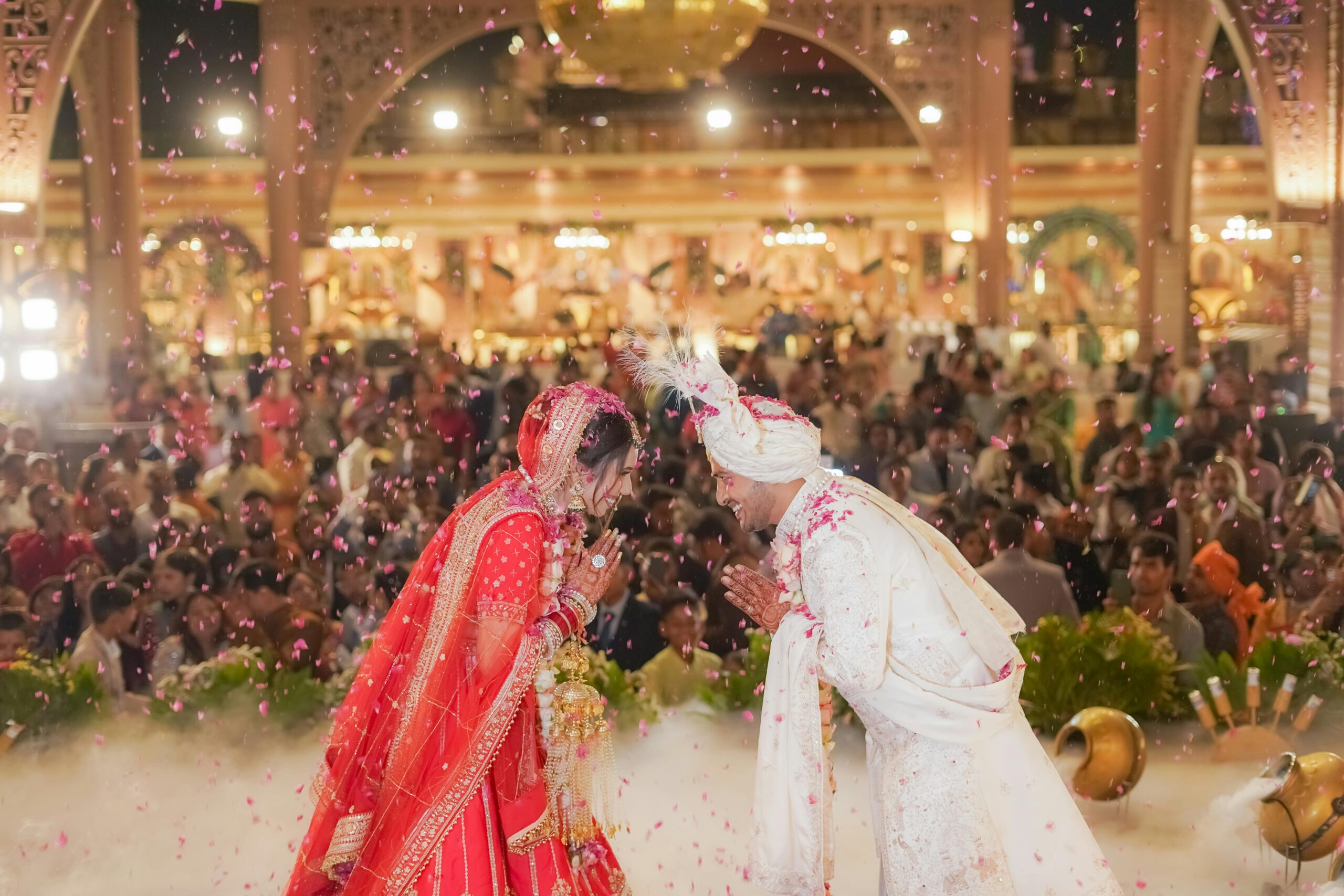
In every wedding, amidst the rituals, music, and celebrations, there is one tradition that stands out as a symbol of love and togetherness—the Jaimala ceremony. Also known as the “Varmala,” this beautiful ritual involves the bride and groom exchanging garlands made of flowers, typically in front of their families and friends. It’s a moment filled with joy, symbolism, and cultural significance.
Let’s explore the significance, symbolism, and the joyful experience of the Jaimala ceremony, which has become one of the most cherished parts of wedding celebrations in India.
The Symbolism Behind the Jaimala
At its core, the Jaimala is not just about the physical act of exchanging garlands. It carries deep symbolic meaning. The garlands themselves represent the bond that the bride and groom are about to enter into, signifying their acceptance of one another and the commitment to stay together for life.
- Acceptance and Equality: Both partners place the garland on each other, which symbolizes their mutual acceptance and respect. The groom and bride are no longer two separate individuals but partners embarking on a shared journey.
- Unity: The act of exchanging garlands represents the unity between the two families, blending their traditions and values.
- Love and Devotion: The flowers in the garlands symbolize the blossoming of their love, and the fragrance signifies the purity and sweetness of their relationship.
How the Jaimala Ceremony Unfolds
- Preparation of the Garlands: The garlands used in the Jaimala ceremony are usually made from a variety of vibrant flowers such as marigolds, roses, jasmine, and tuberoses. These flowers are chosen for their beauty, fragrance, and symbolic meanings in Indian culture. The garlands are often custom-made to fit the personalities of the bride and groom, with elements like beads, pearls, or even gold threads added for a touch of elegance.
- The Exchange: As the ceremony begins, the bride and groom stand facing each other. The groom is typically handed his garland first, and he gently places it around the bride’s neck. Then, the bride does the same, placing her garland around the groom’s neck. The moment is often accompanied by applause, cheers, and sometimes, light-hearted teasing from the guests.
- The Fun Twist: In many weddings, the Jaimala ceremony includes an element of playful competition. The bride and groom might try to outsmart each other by lifting themselves up, or the groom might have to lift the bride to place the garland around her neck. It’s a fun, light-hearted moment that brings laughter and joy to the occasion.
- Blessings and Prayers: As the garlands are exchanged, family members and friends often offer their blessings and prayers for the couple’s happiness, health, and prosperity in their married life.
The Role of Jaimala in Different Cultures
While the Jaimala ceremony is a significant part of Hindu weddings, it’s also found in various other Indian traditions, albeit with slight variations. For example:
- Punjabi Weddings: The Jaimala is often followed by a lively dance and songs, where the bride and groom take part in celebrations with family and friends, showcasing the joy of the union.
- South Indian Weddings: In many South Indian weddings, garlands play a prominent role, but the ceremony may be slightly different in terms of the exchange. In some cultures, the groom ties a “mangalsutra” (sacred necklace) around the bride’s neck after the garland exchange.
- Marwari Weddings: In Marwari weddings, the Jaimala is a grand and joyful event, with the couple often receiving blessings from elders right after the garland exchange.
Personalizing Your Jaimala
While the Jaimala is traditionally made of flowers, modern weddings have embraced a variety of creative ways to make the ceremony even more special. Here are some ideas to personalize your Jaimala:
- Choose Meaningful Flowers: Opt for flowers that hold a personal meaning for you and your partner. For example, you could incorporate your favorite flowers, or flowers that are meaningful in your culture or family tradition.
- Custom Garlands: Consider designing custom garlands that reflect your wedding theme or colors. Some couples add elements like pearls, crystals, or even feathers to their garlands.
- Incorporate Love Notes: A fun idea is to tie a small note or a personal token to the garland that holds a special message or a memory for both of you.

